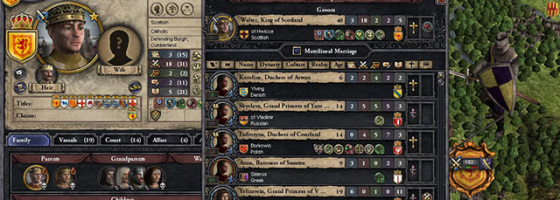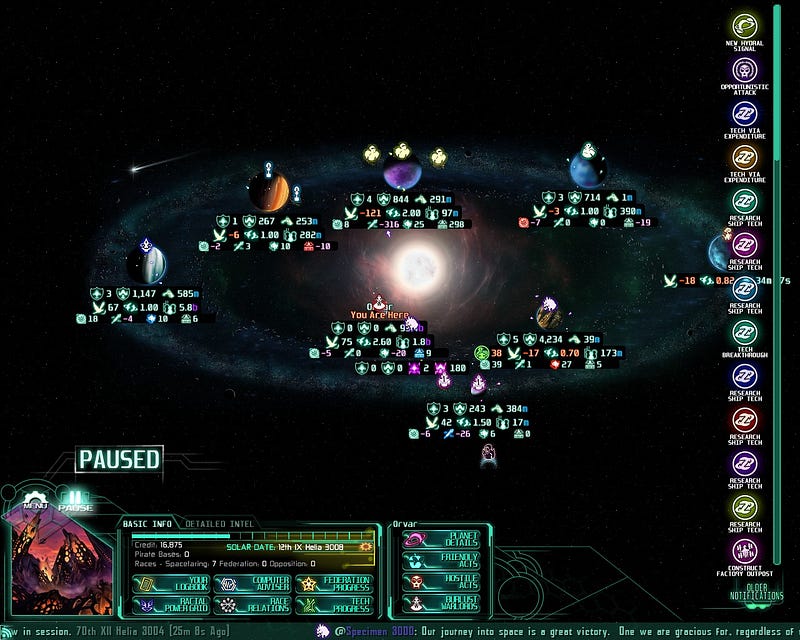
Featured Blog | This community-written post highlights the best of what the game industry has to offer. Read more like it on the Game Developer Blogs.
Tutorial design can be very hard for designers to wrap their head around, but we're going to talk about some basic concepts to understand when trying to teach a player about your game.

On stream, I had a chance to try and fail to learn Stellaris, even with the help of people who have played and beaten it in the past. Experiencing a game from the new player’s perspective is an invaluable resource for when it comes to building a tutorial, and where game designers tend to fail the most on.

The Four Questions
We’ve talked about tutorial design in a previous post and where I laid out three different questions that tutorials need to answer—What is the player doing? How does the player do it? And why does the player do it? However, thinking about it more, I’ve come to realize that there is a fourth question that the tutorial needs to answer about its mechanics: When does the player perform the action?
Action-based games get away with not needing a lot of tutorial focus due to their design. Because the player is performing the actions and seeing their results in real-time, it cuts down on a lot of the learning curve.
The problem comes in when talking about games with abstracted elements. In the video linked, I showed off all the issues I had when it came to trying to play Stellaris. Its tutorial does a horrible job of explaining to the player the “why” and “when” of its game mechanics. Without that information, all the player is doing is pushing buttons and not knowing what’s going on.
When we talk about tutorial design, it goes hand-in-hand with the other major factor of learning a videogame—the new player experience.
The New Player’s Experience
The new player’s experience is where developers have always had trouble building their game around, for one simple obvious reason—they’re not a new player. When you’ve spent months or years working on a game, every element of said title becomes second nature to you.
Many developers when they go to show their titles off at a conference or show have said things like “it’s not the game’s fault, you just don’t get it,” or “here, let me show you how to play it.” Those two sentences are indicative of a game with a bad new player’s experience.
Designing the experience for a new player is different for every videogame. The usual suspects of good design are having an easy to follow UI, starting levels that ease players in, and a structure that gradually opens up to the player.
Again, the problem with abstracted design is that you can’t segment your design and expect someone to learn it. Going back to the four questions, every mechanic connects to each other—you can’t learn how military works in a 4X game without understanding the economics system and vice versa.

4X Games tend to struggle with teaching their game systems
If someone can’t figure out your game or is enjoying the first 15 minutes of it, then they’re not going to stick around to get to “the good part.” However, the question now turns to how to design a good opening/tutorial in the first place?
What’s First?
Any good tutorial must be able to explain to the player the order of importance and learning when it comes to a title. If you want your game to be playable for a wide audience, then you need to assume that brand new people, as well as experts, are going to be playing your game.
If the design isn’t set up to have stages to act as the tutorial, such as in a strategy game, then you must design a tutorial mode for your game.
With that said, it’s important to understand how someone goes about playing your game. One of the best places to look for inspiration on tutorial design is watching how-to guides. Having someone go through not only the order of learning game systems, but what they’re used for, can go a long way towards helping someone start to familiarize themselves with the design.
And remember one thing; the tutorial should begin the second where the player has to start making choices. Many strategy titles will let the player tweak their play experience. While this is great for expert players, this can be another nightmare of the player being overwhelmed before they have even started to play the game.
Telling the player to push buttons is not the same as explaining them why to push said buttons in the first place. There have been discussions around “dynamic tutorials”: where the game will give the player hints and messages based on how they’re playing. A simple example would be from the game Little Nightmares that would only show relevant tutorial messages when the player got stuck.
Covert or Overt Teaching:
When it comes to tutorials, people tend to prefer the two extremes based on the game they’re playing. If it’s a title that lets them immediately get into the action, then they don’t want to be hampered by constant tutorial messages and stopping the player. If the title requires a lot more thought and research when it comes to playing it, then it’s good to have some guided instruction to help the player get their feet wet.

Even the hardest platformers are still noticeably easier to learn due to their design
No matter what however, you need to provide some way for the player to learn your title. An easy way to mess up is to assume that people know about how to play your game beforehand.
An interesting parallel is with the challenges of learning a tabletop game. You can’t always assume that there will be an expert player in the group to walk new players through it; there needs to be an effective guide to learning the game.
Tutorials and first stages are often saved as the last things developed on a game, because of how the game is in flux beforehand. If you want your game to be as far reaching as possible with your audience, then don’t forget to think about the tutorial. For every player that gets turned off or overwhelmed, you could potentially lose out on a new lifetime fan.
If there is interest, I could make a post about how to do a guide video as a companion to this piece, as both do go hand-in-hand with teaching a player how a game works.
Read more about:
Featured BlogsAbout the Author(s)
You May Also Like









